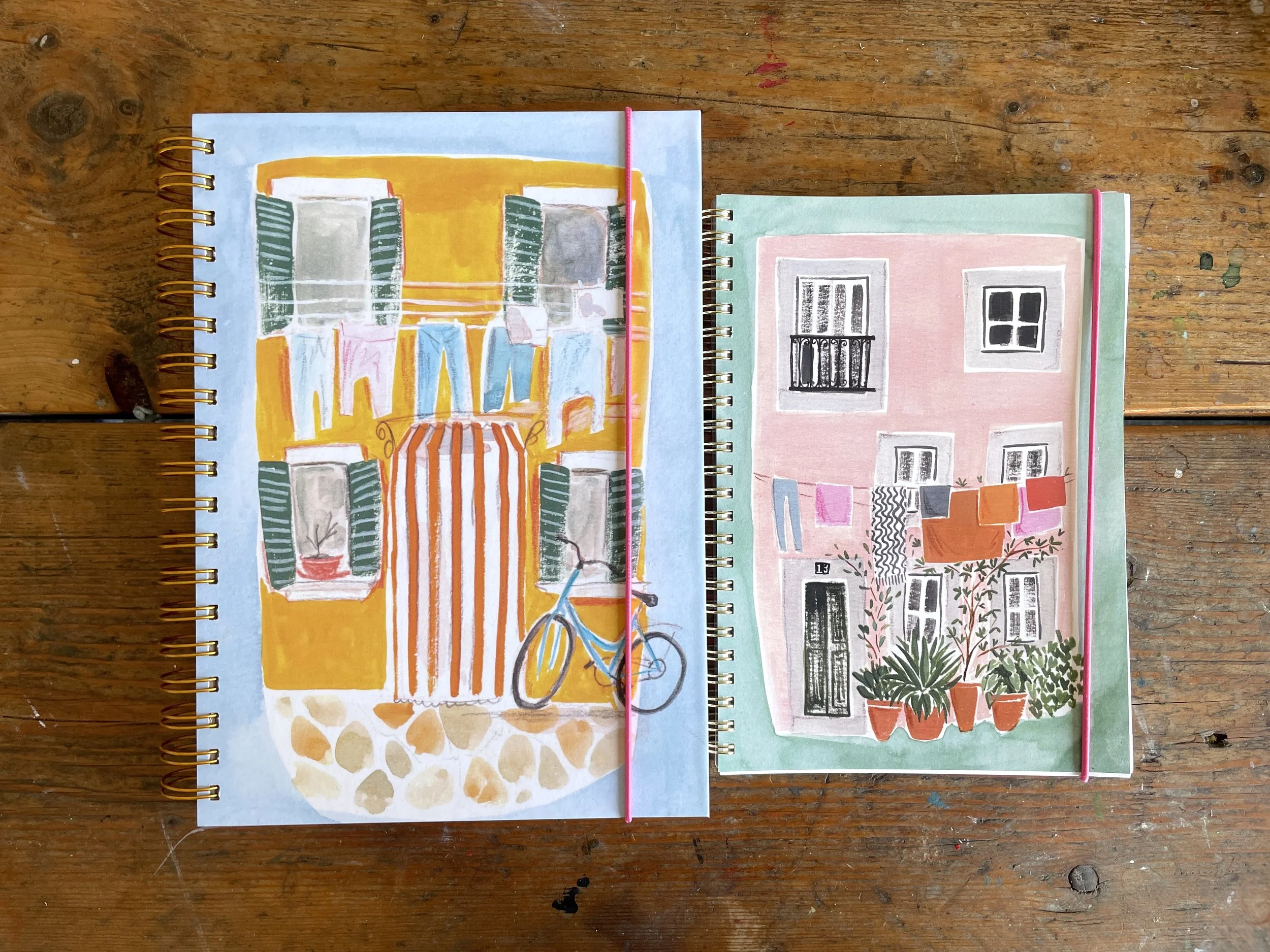
Collaboration with So Typical Me
As an illustrator, there is nothing more fun than seeing your work on actual physical products. I love how these journals featuring my colourful houses have turned out.

Art Retreat in Portugal
I am so excited to announce my next painting retreat! I will be teaching a Mixed Media Sketchbook Retreat at the beautiful Sofia in Monsaraz retreat centre in Portugal from 18 (Thursday) to 22 (Monday) April 2024. During this getaway you will learn to create loose, mixed paintings in your sketchbook, inspired by the beautiful surroundings of Sofia in Monsaraz.

Art Retreat in Valencia
I’ve been back from my art retreat for just over a week and I’m still on a high from what an incredible experience it was, still busily working in my sketchbook recording my memories and making the most of all the inspiration. It’s hard to even know where to start. At the end of April I taught a week long art retreat with UpTrek just outside Valencia Spain with a wonderful group of women and we all had a magical time.
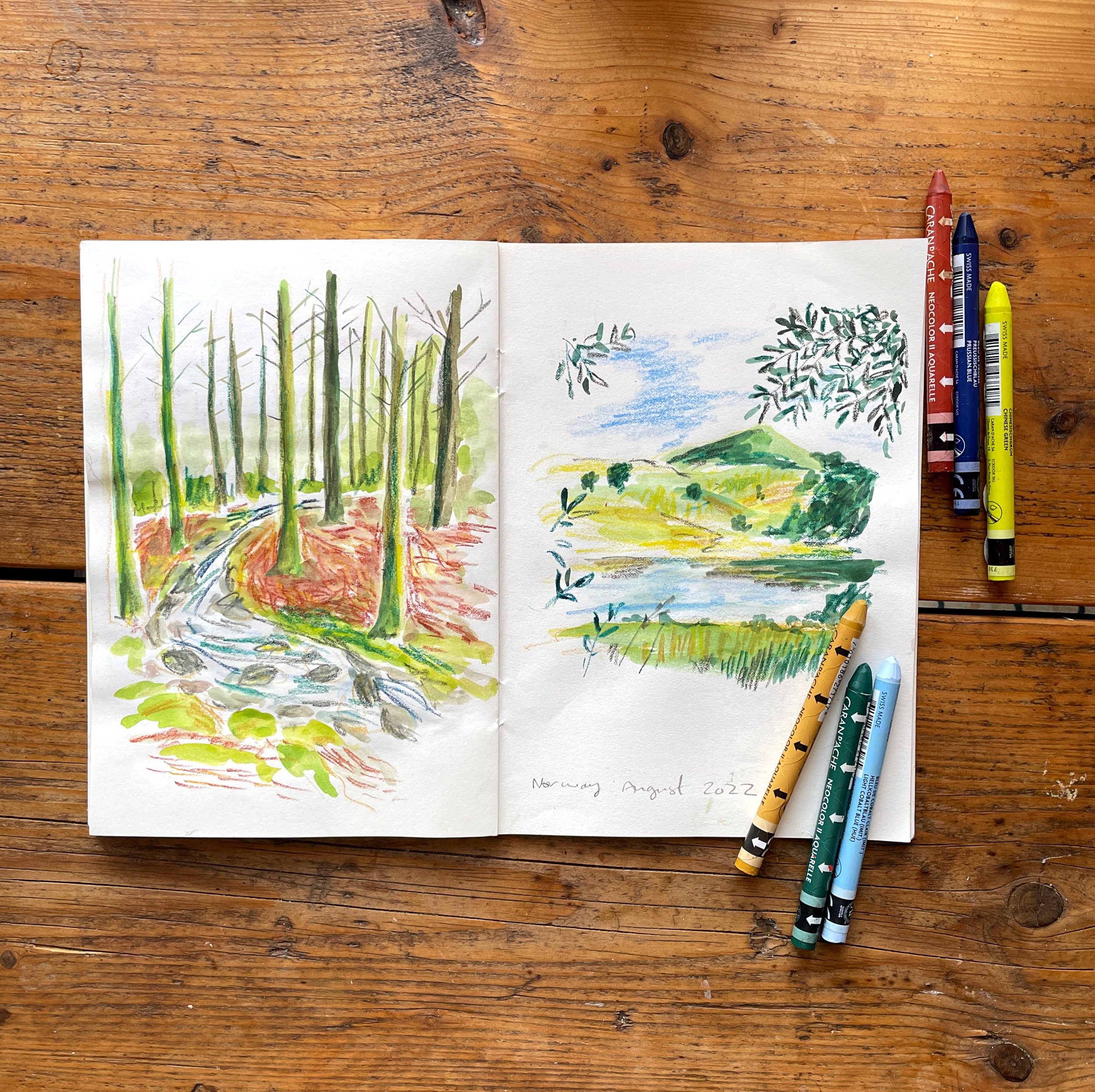
Five Days in Norway
I just got back from a little holiday in Norway. We booked flights very spontaneously and we had a wonderful five days staying with friends in Stavanger. We hiked in the woods, went to the beach, visited the city and I even have time to do a little bit of painting whilst Herbie napped.

Top Tips for Slower Travel
Slow travel is all about slowing down and taking the time to make a real connection with the place you are visiting. It’s about spending time in one place, exploring your surroundings at a gentle pace and really relaxing, rather than rushing around in order to visit lots of different places.

My London Little Black Book
As a Londoner I often get asked for recommendations for what to do when visiting the city. Here’s a list of my favourite places to shop, eat and drink coffee.
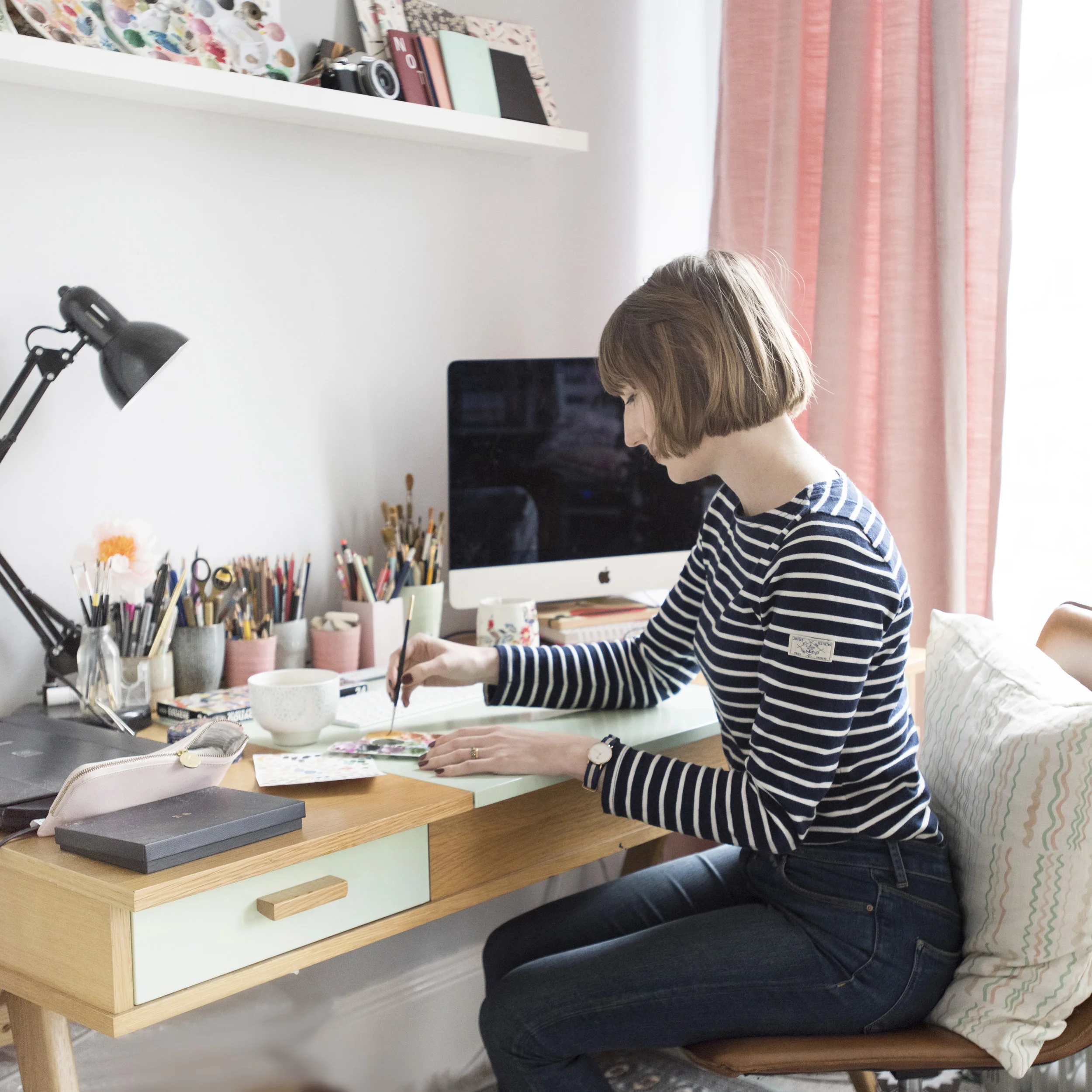
My 2018 in Review
So 2018 was a bit of a crazy year. I feel like I say that every year, but I think your late 20s are the pivotal years with big things happen and you start making strides in the world rather than just bumbling along cluelessly (or may that’s just me).

A little Guide to the Suffolk Coast
I love Suffolk, I think it’s a little bit overshadowed by Norfolk as a mini break destination, but Suffolk has so much to offer. It’s only an hour and 10 minutes from London on the train and is full of beautiful villages and charming seaside towns.

A Little Guide to Sóller, Mallorca
My husband and I love a European city break, but I've realised in the rush to do and see as much as you can in three or four days it's not always that relaxing. We decided to book a springtime European getaway with a focus on slowing down and relaxing. Sóller in Mallorca was the perfect solution.

How to Sketch While You Travel
Is there anything more relaxing than sitting painting in the sunshine whilst on holiday? However it’s so easy to pack your paints and sketchbook in your suitcase and then leave them there all week! I’m definitely guilty of taking my art materials on holiday, but never actually using them. When you are on holiday and you’ve got a limited amount of time to do and see things it can be difficult to make time to sketch. Here are my top tips for making it happen.

2017 in Review
It’s that time again, the year in review blog post! I’m terrible at remembering what I’ve done in a year, and tend to think I haven’t done much of anything, which is why I’ve got my diary out so I can go through month by month and remind myself of all the exciting stuff that’s happened.
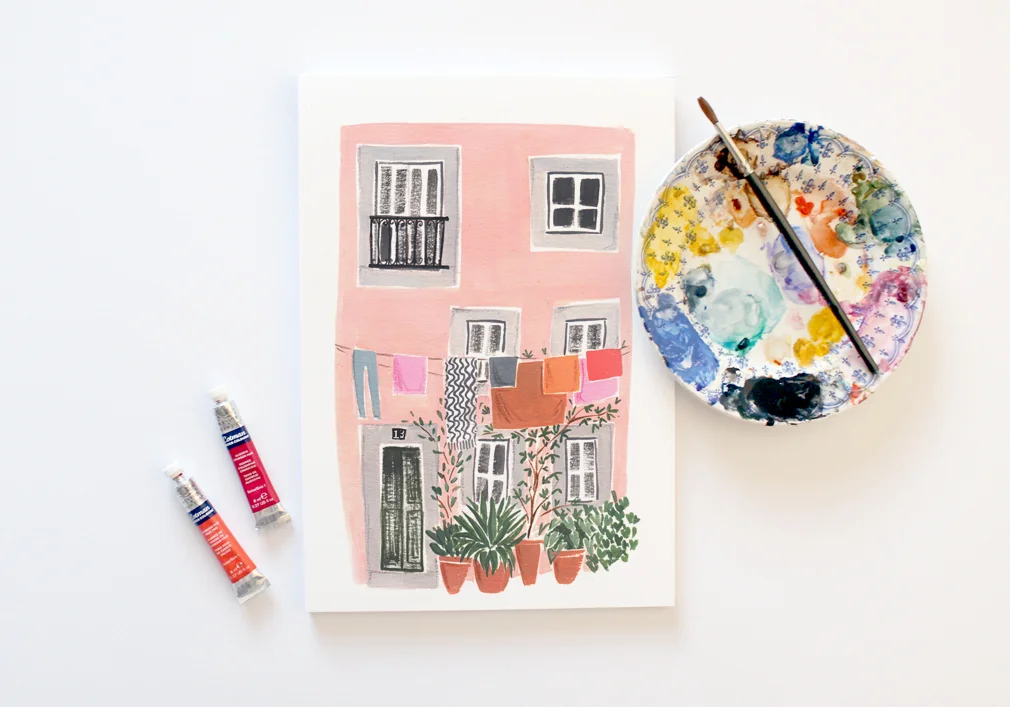
A Little Guide to Lisbon
Lisbon has always been on my must visit list, so when I decided book a mini break as a treat for finishing writing my first book it was an obvious choice. I couldn’t wait to explore the cobbled streets and colourful alleyways of Lisbon.

Peru Part 4: Inkaterra Machu Picchu Pueblo Hotel
As soon as you step onto the grounds of Inkaterra Machu Picchu Pueblo Hotel you you are enveloped by dense jungle and an immediate sense of calm. It is such a perfect Oasis away from the noise and hubbub of the main town. Inkaterra own 12 acres of unspoilt cloud forest, and the hotel is nestled right into the jungle.
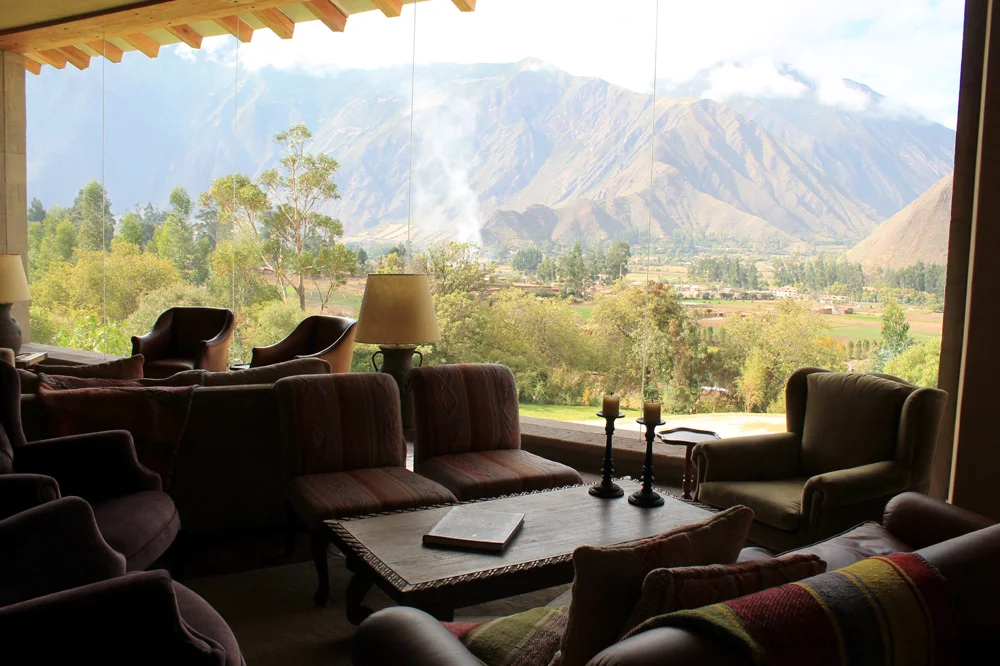
Peru Part 3 - Inkaterra Hacienda Urubamba
A night's stay at the incredible Inkaterra Hacienda Urubamba.

Peru Part 2 - The Sacred Valley
On the second part of our Peruvian adventure we explored the Sacred Valley, including Ollantaytambo, Moray, Maras, Chinchero and Pisac.
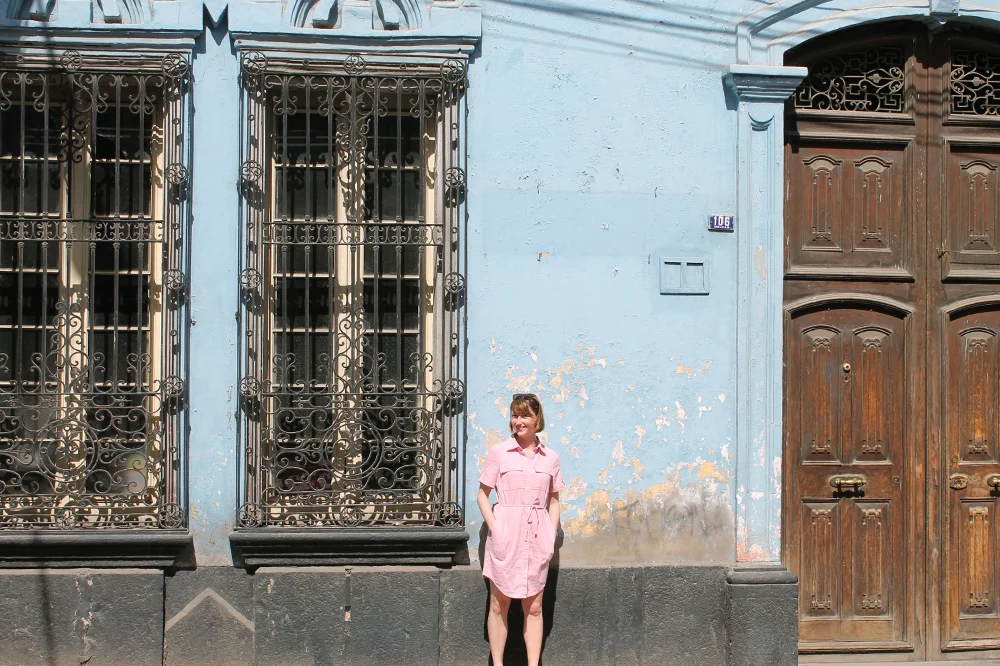
Peru Part 1 - Arequipa
The first part of our travel through Peru. After flying into Lima and staying one night we arrived in Arequipa, Peru's second largest city.
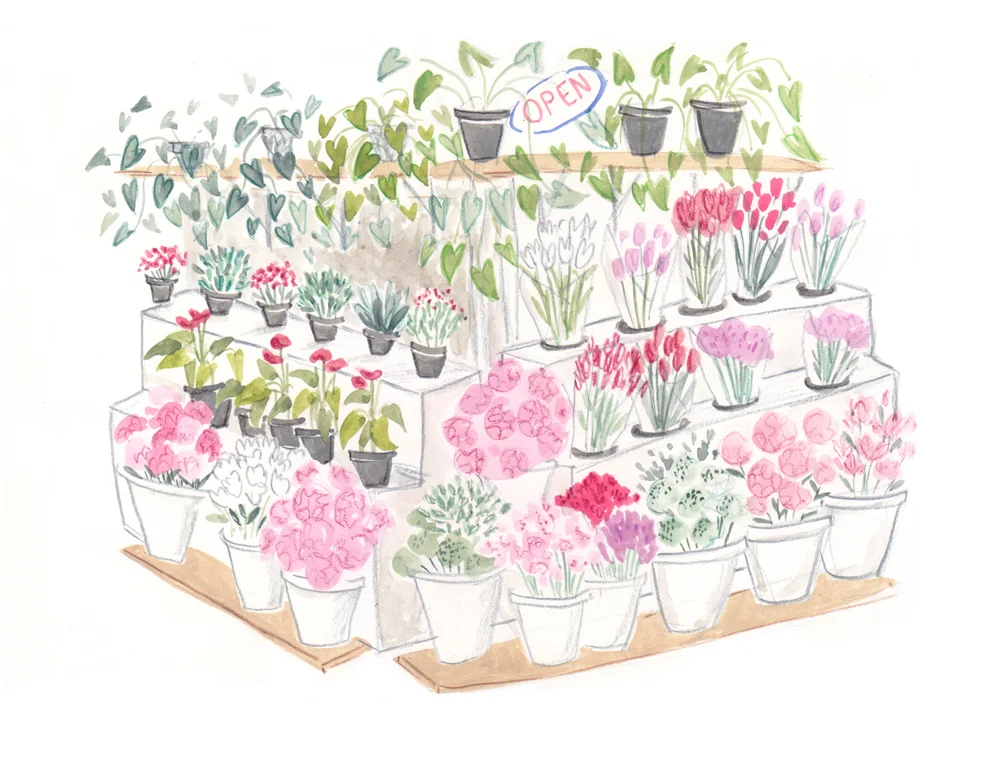
Finding Inspiration
In this blog post I wanted to talk a little bit about inspiration. I personally define inspiration as feeling motivated to do something or create something. It's that feeling when you read a great book and immediately want to sketch the main character, or you go somewhere so beautiful that you can't stop taking photos, filming or sketching.
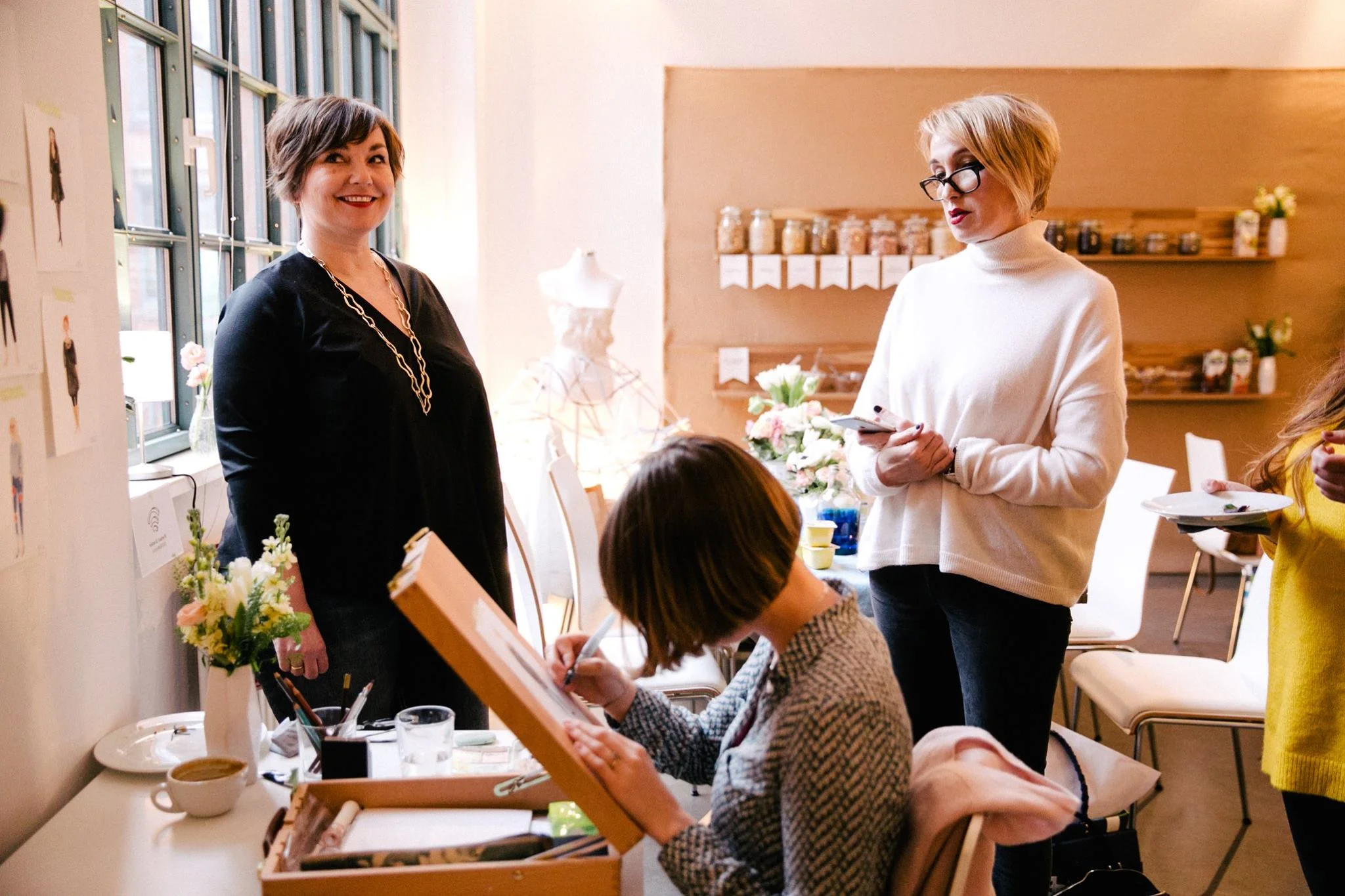
Live illustrating with SisterMAG and Alpro
In January illustrator I invited over to SisterMAG's head office in Berlin to live illustrate at a special press event with Alpro. I have worked with SisterMAG for years, so I was really excited to meet the whole team and see their offices.
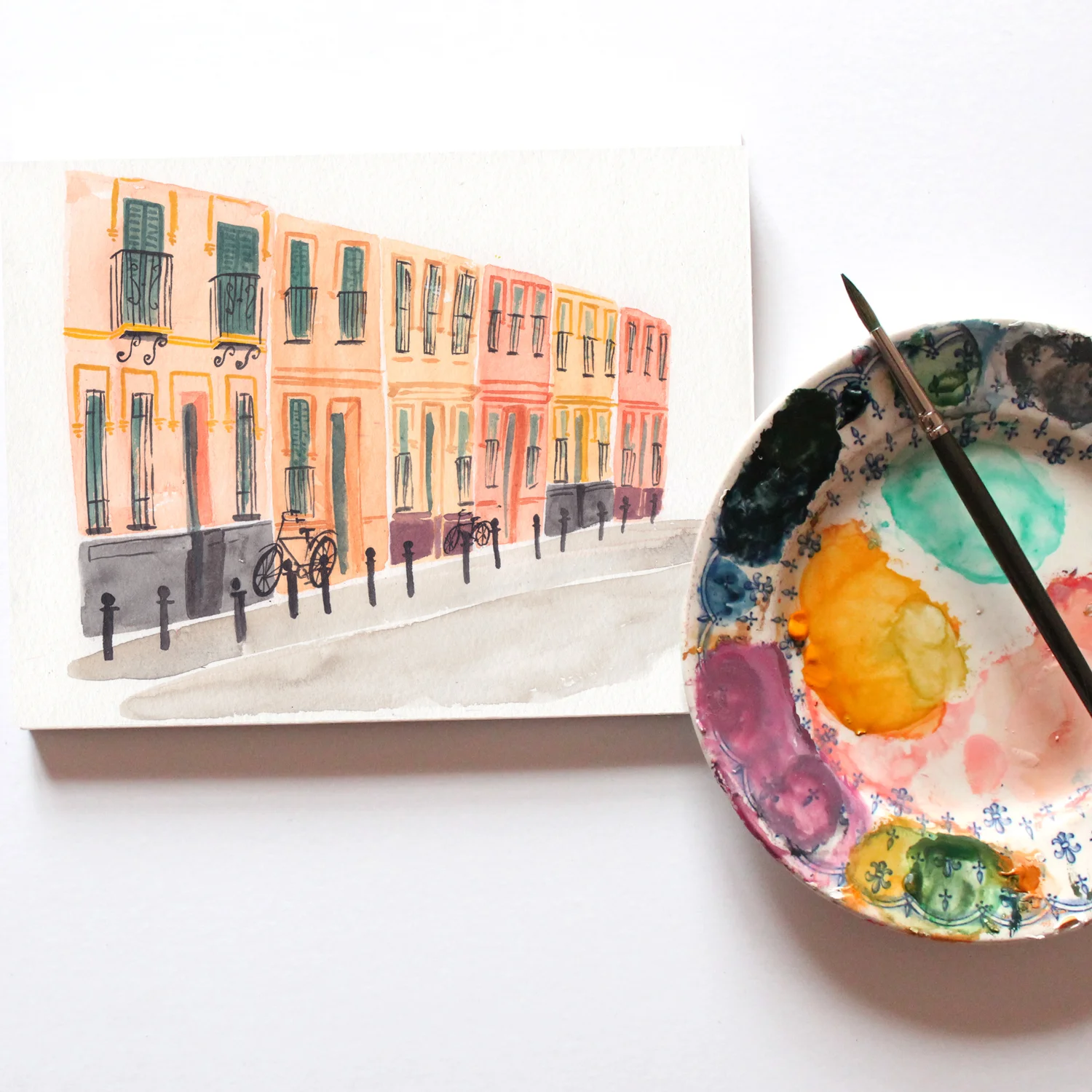
A Little Guide to Seville
I’ve always had a fascination with Seville, probably because so many operas are set there. It has always seemed like the most romantic and mysterious of Spanish cities. So when we where looking for a city break that would provide a bit of winter sun and allow my husband to practice his Spanish, Seville was the obvious choice.

Honeymooning in Tulum
When it came to choosing our honeymoon destination we were looking for beaches, good weather and culture. I saw a picture of Mayan ruins over looking a stunning beach and we were sold. Two flights to Mexico booked.
